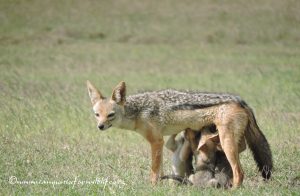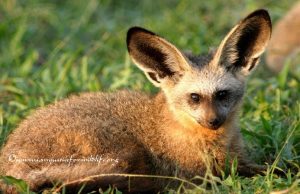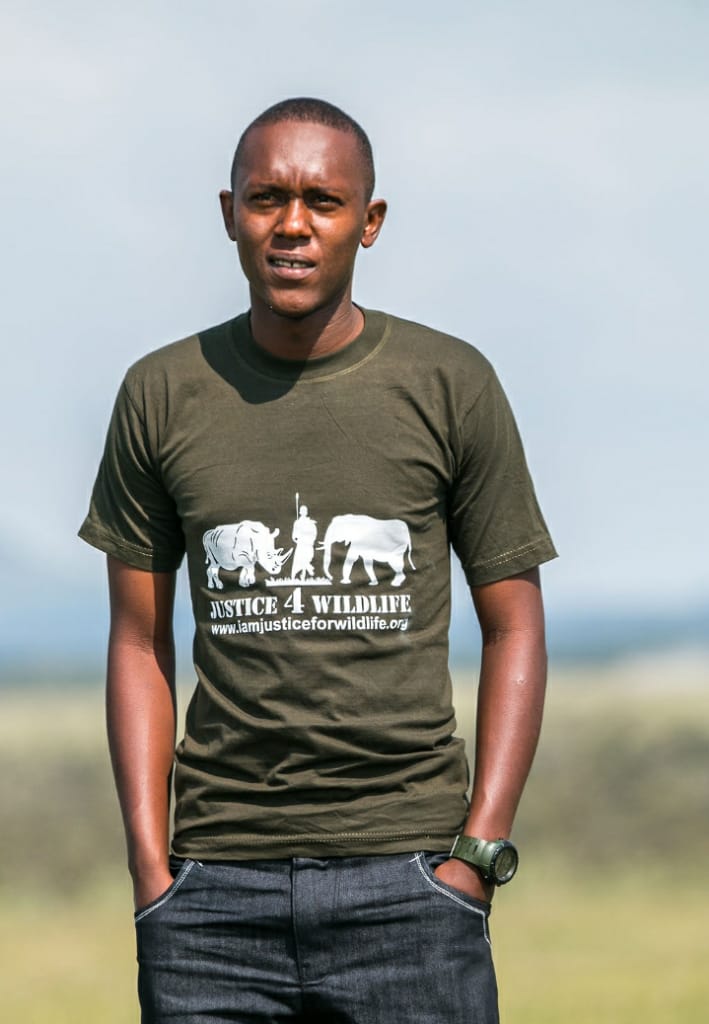Field identification of wildlife tracks and Scats is a rangers speciality, over time one gets acquainted and familiarized with the various animal tracks, this is one unique skill that is quite handy to every ranger because being aware of your surrounding is optimal for survival.

By interpreting tracks and signs in an area, you can piece together a record of recent visitors and events. For instance, if you come across a recent kill site there is so much information on the ground; approach tracks of a predator, jumping sprints, deep tracks left by the antelope in its bid to escape, blood spots on the sand, a drag mark leading to the bushes for concealment.

Fresh Lion tracks
It would be easy to walk straight past the scene, but a careful observer could easily piece together a vivid picture that is as fascinating as witnessing the kill itself, the stories read on the ground are sometimes amusing or dramatic and add greatly to your understanding of the animals’ behaviour of the particular area
I have taken visitors on bush walks in the various conservancies and parks that I have worked in and it’s quite fascinating how astonished they get on realizing how easily we read the footprints on the ground and tell which animals we are on their tracks, categorizing the various scats we come across, and how various animals differ in browse selection and preference of plant species. But that’s a story for another day.
I would like to walk you through how to identify common Carnivore Tracks and Scats, a breakdown that is simple to be comprehended by anyone from an ecologist, hiker, outdoors fan,wildlife/ natural resource student, conservationist, safari guide and if you live close to any conservation area then be very keen to understand how to tell which carnivore visits you farm at night to prey on your livestock in the event you need to fill up a compensation form.
One of the best pointers to tell apart a Lion and leopard track from a hyena and cheetah track other than size and location found is that Lions and leopards have retractile claws “the claws only come out when hunting” unlike for the hyenas and cheetas that are always out.
AFRICAN LION


Lion Spoor
- The hind tracks are narrow than front tracks.
- Each foot has a single large pad with two indentations on posterior edge.
- No claw marks show in tracks–Front paw: Total length 110-130mmTotal width 90-125mm-Hind paw: Total length 105-125mmTotal width 80-115mmLion Scat

The average diameter of the droppings is usually greater than 40 mm
-May resemble those of spotted hyena though scattered at random and with great variation
-Droppings comprising mainly digested blood and flesh retain their dark colour but those containing a lot of calcium will whiten as they dry.
Spotted Hyena

Hyena Spoor

-Claws are blunt and show on tracks
-The front feet are larger than hind feet
-Main pad is large and its posterior edge
angled.
Front paw: Total length 90-105mm
Total width 90-105mm
Hind paw: Total length 80-95mm
Total width 75-85mm
Hyena Scat

Dropping are greenish when fresh and turns whitish when they dry this is because of considerable quantities of bones fragments that they consume
Jackal

Black-backed Jackal Spoor

-The front foot has a large triangular main pad.
-The two middle toes extend well beyond the outer toes.
-In the hind foot, the main pad is smaller than that of the front foot but the two middle toes also extend forward.
Black-backed Jackal Scat

– Produce sausage shaped droppings
-Droppings are greenish but turns white after several days.
LEOPARD

Leopard Spoor

-The hind track is elongated than the front
-Each foot has a single large pad with two indentations on posterior edge.
– Front paw: Total length 70-90mm.
Total width 70-90mm.
-Hind paw: Total length 80-100mm
Total width 60-80mm
Leopard Scat

-The average diameter of the droppings ranges from 20 to 30 mm.
-They are usually large but never as large as the droppings produced by an adult lion.
-May contain large quantities of hair.
Cheetah

Cheetah Spoor

Show claw marks on track
-Single large pad with a double indentation in the posterior edge
-Tracks are more elongated than those of lion
-Front paw: Total length 70-85mm
Total width 65-75mm
-Hind paw: Total length 75-90mm
Cheetah Scat

-Produce sausage shaped droppings.
-May deposit loose accumulations at lying-up spots near large kills.
AFRICAN WILD DOG

Wild dog Spoor

-Claws are blunt & thick & show on tracks
-Main pad is roughly triangular and
-posterior edge is straight
-Each foot leaves fours toe imprints.
-Front paw: Total length 76-80mm
Total width 56-65mm
-Hind paw Total length 68-82mm
Total width 48-55mm
African Wild dog Scat

-Generally, scatter their droppings throughout their home ranges.
-Droppings can accumulate at dens sites with pups.
BAT-EARED FOX


-The tracks of the fox are much smaller than those of jackal
-The claws may extend up to 18 mm beyond the toe pads and hind track is narrower than front track.
-The claws of the middle two-toes of the front foot are close together in the tracks

-The average diameter of the droppings is 18 mm.
-Droppings consist of chiefly of insects fragment but may contain large quantities of seeds and fruit skins.
To learn more about tracking you can write to us for any specific animal that you would like to learn about info.iamjusticeforwildlife.org or alternatively you can purchase a field guide book by Chris & Mathilde Stuart which is quite handy in learning basic tracking skills.
“For most of history, man has had to fight nature to survive. In this century he has to realize that in order to survive he has to protect it.” Jacques-Yves Cousteau Here we celebrate the unsung wildlife heroes in the grassroots doing remarkable work to conserve our wildlife heritage, Get to learn about wildlife from a ranger/ ecologist in Kenya a freelance eco-traveler, experience the diverse cultures and African heritage from the natives and take an adventure to new destinations to learn about rare attractions that are hardly talked about and to top it all up some of the best wildlife photographs that will make you reconnect to your wild side appreciate everything around us and fall in love with the natural world, because “It is not enough to love the natural world; the point is to defend and preserve it.” Edward Abbey
Our wildlife, our responsibility. When it comes to standing up for our wildlife it’s better to be outspoken than unspoken.


